A lot of revealing things have come to light in the continuing coverage of the Avdeevka denouement. For the first time, the U.S. mouthpiece was forced to acknowledge Russia is having success:
This was followed by a series of MSM articles that blew the lid on some of the true losses incurred by the AFU at the final collapse.
The above WaPo article begins with:
KYIV — Ukraine failed to safely evacuate all its troops from the eastern city of Avdiivka during its disorderly retreat last weekend, despite claims from its new top military commander that the move was designed to save lives and avoid encirclement by the advancing Russians.
But the most shocking report came from NYTimes which stated that soldiers close to the action confirmed upwards of 850-1000 AFU were captured during the chaotic retreats:
They go on to write:
But the capture of hundreds of soldiers could change that calculus. American officials have said in recent days that morale was already eroding among Ukrainian troops, in the wake of a failed counteroffensive last year and the removal of a top commander. Because of those problems, the officials said, Ukraine’s military has struggled with recruitment.
So why is this so shocking? Beyond the simple admission of such a huge amount of captures in merely a day or two, the most profound thing is that it confirms Russian figures, which I reported last time. I wrote that Russian sources said at least 500+ had been captured, and pro-UA accounts had scoffed at this number. Thus, if this proves that Russian estimates of captures were accurate, it means Russia’s other even more critical figures are likely accurate as well—for instance, about total AFU losses in Avdeevka.
Shoigu gave the figure as 2,400 casualties just in the final two days of the collapse:
And as for Russia? Shoigu reported the final capture of Avdeevka happened with “minimal losses” on the Russian side:
Some would laugh at the disparity—but as I said, NYTimes already grudgingly proved Russia is giving accurate figures. For anyone who’s been watching the many ‘clean up’ videos that have streamed out post-liberation, you’ve likely seen the mountains of AFU corpses being cleared by Russian forces.
Estimates have total Ukrainian losses in Avdeevka anywhere from 30-60k, but it’s difficult to know the total amount. As for Russian losses, the Ukraine side claims their usual unsourced exorbitant numbers, like 50-100k, etc. One interesting aspect was a Russian blogger named ‘Murz’ who wrote a long despairing rant days ago, claiming Russia lost 16,000 men in Avdeevka, and then took his own life. Murz was close with Strelkov, and together they had long formed the backbone of what some could call a 6th column ‘bloc’. Murz was famous for his constant viterupative complaints and insults against the Russian MOD, as well as regularly wrong ‘predictions’ about Russia losing or not being able to capture anything further.
In light of that, it’s difficult to take Murz’s casualty count seriously, as he was merely a blogger with connections to the military but would not actually be privy to casualty tallies. Also, it should be noted that he expressly said the 16,000 figure was for the entire front ranging from ‘Nevelske to Novoselovke’, which encompasses the very active battlefield of Pervomaiske through Avdeevka and more.
Ultimately, MediaZona has Russia averaging something like 200 weekly dead across the entire war since early October, when the Avdeevka offensive began.
This would allow for something like 3000 dead along the entire front since that period, of which Avdeevka would only be a fraction. If I had to guess, I would say it’s possible Russia lost 2000-4000 in Avdeevka. But recall, Shoigu said Ukraine lost 2500 just in the final two-day collapse—so, extrapolate that out for the entire 4 month campaign. After all, Shoigu said Russia threw 200 tons of precision bombs on Avdeevka daily, equivalent to 200 1000kg Fab glide-bombs, or 400 of the Fab-500s.
Soldiers from Wagner who fought in both Bakhmut and Avdeevka indirectly support this assertion as they’ve recently stated that it was easier in Avdeevka as Ukrainians much more often simply fled rather than putting up a fight:
But the remarkable thing is that the losses for Ukraine appeared to be so grave, that it seems to have set off a downward spiral of panic and collapse. Figures all across the pro-UA side are now ringing alarm bells. For instance, White House spokesman Sabrina Singh said that if aid is not given soon, Ukraine will have to start choosing “which cities they can or can’t defend”:
Top Ukrainian figures are now publicly echoing that the AFU lines may soon collapse, or are already collapsing on every front:
Here, Vladimir Raschuk, the commander of the Rubezh Brigade from Dnepropetrovsk, predicts the liberation of Dnipro itself “soon” if emergency measures are not taken:
Now the acting commander of the Azov Brigade, Bogdan Krotevich, laments on Ukrainian TV that Russia is attacking everywhere and Ukraine not only does not have enough troops to defend, he hints that Kiev and Kharkov could end up falling:
The auto-translation messes up a little at the end, but he essentially states that “Russia is rotating troops back and forth everywhere, from Avdeevka, Kupyansk, Rabotino, etc.”
Those who’ve just read my new paid report will recognize these words immediately—this is precisely what I wrote about, and will expand on later in this piece. The short of it is: with its far superior mobility and logistics infrastructure, Russia is able to totally dazzle the enemy by constantly reorienting its forces through roughly 5 major fronts, keeping the Ukrainian force invariably off-balance due to their inability to keep up the troop rotations.
Though it seems hyperbolic to say this, especially since we’ve said it many times before, but there is a definitive tone shift going on now. A clearly palpable panic is beginning to set in, with the directness of the warnings coming from officials reaching new levels of urgency. Foremost of this recent spate is the following:

Recall we’ve had statements before, from around January, saying that Ukraine’s stockpiles could last ‘two months’. This seems to concur with that.
But here’s the kicker from the article above:
U.S. officials predict similar scenarios will play out elsewhere in Ukraine as the government there is forced to make tough choices on where to put its remaining air defenses -- and as Russia makes greater use of its airpower, including lobbing satellite-guided glide-bombs much as it was in Avdiivka.
"The things that are protected today -- they will not be able to protect all of these locations in the future if they don't maintain supplies of interceptors," the senior defense official said. And if Russia gains control of the skies, "it completely changes the nature of this fight."
Followed by:
Added one Ukrainian official: "Our primary goal is to deter Russian aviation. If we can't do that, it's time to pack our things."
And here are a few more examples showing just how the commentary is shifting:
On Ukrainian TV the secretary of the Verkhovna Rada Committee on Defense stated soon “total mobilization” may have to commence:
Former head of CIA and US Secretary of Defense Robert Gates says the war is not a stalemate, but in fact the tide has turned to Russia’s favor, and says the loss of Avdeevka was important:
"TIDE HAS TURNED IN RUSSIA'S FAVOR" - Former head of the CIA & former US Secretary of Defense Robert Gates says, disappointed.
Many people are talking about this military conflict as a stalemate. I believe that it's not a stalemate - the Russians have regained momentum.
There is a feeling that they are now going on the offensive. The loss of Avdeevka (https://t.me/IntelRepublic/34184) was important. This creates an opportunity for the Russians to push the front line further east - Gates reiterates.
Bloomberg agrees:
And Reuters did a report whose utterly bleak accompanying video is a must-see:
And another report states shortages in the AFU are now ‘so extreme, they’re counting bullets’:
This culminated in a new Politico report that even claimed that Ukrainians are getting shelled in their trenches while scrolling their phones for updates on the Congressional aid package:
Things are clearly heading in a direction where the Russian war machine is picking up full steam on all sides of the front, which just so happens to coincide with the not-too-distant start of spring. Of course, we must traverse another Rasputitsa mud season first—but the trajectory clearly points to a very bad situation for Ukraine by April or May.
Russian forces have all the initiative, all the tempo, and are breaking through in every sector of the front, according to latest updates.
New York Times on the next likely strikes of the Russian army after Avdiivka. The most likely scenario is the development of an offensive north of Ugledar with an overhanging strike and encirclement of the city.
Another point of focus of the Russian Armed Forces is Rabochino, where events are taking place right now, and the AFU command considers this area to be the most tense, and the concentration of Russian forces is more than near Avdiivka. Another 100 thousand Russian soldiers are gathered in the area from Kremennaya to Kupyansk.The BBC, meanwhile, already writes that the fall of Avdiivka will mark the biggest change in the front line since the battles for Bakhmut and will have a much stronger impact on the situation than the same Bakhmut.
The commander of the infantry platoon of the 53rd brigade of the Armed Forces of Ukraine stated as it is-almost the entire group of the Armed Forces of Ukraine west of Donetsk was tied in logistics to Avdiivka, there are no similar distribution hubs and interchanges west of this city for tens of kilometers. Of course, the capture of Avdiivka will have the greatest impact on the front line in the coming weeks.
And that’s the big question on everyone’s mind—what next after Avdeevka? We now know Ukraine has been exhausted by their ‘counter-offensive’ so clearly they’re not ready for another try, particularly not when they’re openly signaling 2025 as the earliest next attempt date:
Right now the situation on the front can only be described as: Russia is advancing everywhere. And there have even been moments of alarm that seem to point to a potential cascading AFU collapse.
After Avdeevka fell, Stepove in the north was totally captured, followed by Severne in the south being currently overrun, with Russian forces already controlling part of the settlement.
Ukrainian channel confirming:
And even as of this writing, Lastochkino just to the west of Avdeevka has reportedly been totally captured:
Multiple videos of Russian forces planting the flag at the center have been released.
Just south of there near the key town of Kurakhovo, it was said Ukrainian command had begun to flee:
Then, Russian forces totally captured the village of Pobeda (Victory) which is near the same axis:
It’s more important than it looks because it begins putting the strategic town of Novomikhailovka in a cauldron, as seen below:
And Novomikhailovka itself is being stormed from the east:
This may seem scattershot, but follow along and I’m going to segue it into an important, larger overall picture.
Firstly, Ugledar is slowly being cut off at its most important supply routes by the undermining of Novomikhailovka with the recent capture of Pobeda—all three seen circled here for better visualization:
Ukrainian correspondents are urging attention to this area as Kurakhovo is next in the crosshairs and Ugledar may soon become enveloped:
Summary of the above with notes:
Both Ugledar and Kurakhovo are key strongholds with importance equal to that of Avdeevka as they hold the keys to the entire AFU front east of the Vovcha River and reservoir. Here’s a good analysis thread of this front by Mikael Valtersson:
The useful map above shows the water source (map is slightly outdated from right before Avdeevka capture, so ignore that). I point this out because, as you may recall, in a report 10 days ago I outlined how Ukraine is building its second echelon defensive line roughly along that Vovcha River, from Kurakhovo to Prohres/Progress. To use the older map from that previous report:
Valtersson likewise shows how the Vovcha River second line is the next main barricade west of Avdeevka—that blue line from Prohres southward is the river:
Not far from there, Russian paratroopers are said to be storming Ivanovske, on Bakhmut’s western flank, and have already lodged themselves in the important town as well:
Not to mention they have reportedly begun storming the outskirts of Krasnogorovka, north of Marinka. During this, Russian planes delivered a massive Fab-1500—or Odab-1500 as per some accounts—to AFU positions in the industrial sector at the center of the town (Krasnogorovka):
The raw power seen above just highlights how the collapse of Ukraine’s defenses may begin accelerating. With a shortage of demoralized troops, and Russia pumping out such bombs at record volumes, it’s difficult to imagine how long they can keep taking such poundings.
Now there’s continued word that Russia gathers a ‘huge force’ in the Zaporozhye region:
That’s in regard to the offensives that have already begun around Rabotino. And as of this writing, reports are now streaming in that Rabotino has either been totally captured or almost entirely, as well as AFU having fully retreated behind the first dragon teeth of the Surovikin line just east of there near Verbove:
That would mean Ukraine is back almost entirely to the starting line of their ‘counter-offensive’.
Unfortunately for Ukraine, rumors of huge embezzlements undermined any defensive preparatory work on Zaporozhye, which is likely why Russia is now able to swiftly retake territory:
The Ukrainian Cabinet of Ministers did not have enough money for "dragon's teeth" for Zaporizhzhya Regional State Administration of Ukraine
The capital construction department of Zaporizhzhya first opened an auction, but then it was closed due to the lack of funding from the state budget. The local authorities expected to buy 45 thousand concrete pyramids for 88 million hryvnias to fight tanks.
Thus, defense expenditures are simply ignored by the Cabinet of Ministers of Ukraine. They simply removed half of the military commanders from their posts, and there is not enough money not only for weapons, but also for concrete blocks. And all because the overseas sponsors have not signed the check yet.
As well as this from Rezident UA:
Our source reported that defensive structures were never systematically built in Ukraine, due to the desire to make money on this issue.
Now information has emerged that the Ministry of Defense team was unofficially strengthened by ex-deputy OP Kirill Timoshenko
According to available information, he is seen every day in the ministry itself.
The functionary, as a former curator and manager of the “Big Construction”, was entrusted with the work of coordinating the construction of fortifications. Kirill Timoshenko knows how to make money on construction sites and manage large budgets, which is why Bankova really needs such a person.
But the biggest news of all was Zelensky’s visit to the Kharkov front on February 19th:
Some have noted how he visited Avdeevka literally weeks before it fell, and usually stages his desperate visits to buoy morale on a front that’s set to heat up massively:
I’m not sure if the above ‘superstition’ anecdote is tongue-in-cheek or not, but the pattern does bear out.
But it was followed by this report:
Kiev prepares to surrender Kharkov region: almost all reconstruction money has been taken away from the region.
In the social networks of the Ministry of Development, Kharkov region was the first to receive funds: 993 million UAH were to be allocated for the reconstruction of the region. However, the map was later updated and only 1 million UAH was left for Kharkov region.
None of the oblasts has a smaller amount, except Sumy and Kherson oblasts, which will receive no subsidy at all," writes Ukropa Fresh. According to the new map, the Lvov region (424 million UAH) and the Dnepropetrovsk region (341 million UAH) will receive the most. We would like to point out that the entire Kharkov region has been declared evacuated and the active removal of archives and industrial equipment from the regional centre has begun.
The above claims that all governmental assistance funds to both Sumy and Kharkov have been retracted as if Zelensky sees their loss as a foregone conclusion.
And on that final note, we have continued word about something big potentially coming down the line in Sumy region. I saved this for last because, as chance would have it, this is the one piece of news I have actual exclusive, personal confirmation for with my own on the ground first hand source.
So what is the news?
Top Ukrainian officials have been talking about a Russian build up in the north, but not just Kharkov—specifically the Sumy region:
Mosiychuk commented on the above:
I won’t name the exact villages just in case, for OPSEC reasons, but I now have a direct report that villages on the Russian side of the border in Sumy region are being quietly evacuated. Russian authorities are offering families money and a roughly two-month time period to get out of dodge—for an unknown reason.
Given all the above and recent reports, there is strong possibility that Russia may be finally planning a strong Spring campaign coinciding with the opening of a new direction from the north. As ‘Pyotr Chernik’ said above, there are no direct signs quite yet—he believes Russian forces stationed there are still too few. However, Russia could quickly bring up the grouping to an army corps—or several—in size, when the go date nears.
This brings us to the final part which I promised would be a continuation of the ending of the last paid piece.
For free subscribers who couldn’t read the paid piece, I will start off by first pasting the final portion of it to tie into the concluding analysis:
It is the age of paradox in warfare: where de rigueur total dispersion of forces appears to make high casualty densities obsolete, yet the entire length of the battlefield is overwatched by the most unprecedentedly powerful and accurate systems in history, like Iskanders, Kinzhals, Zircons, HIMARs, etc., which allow the carrying out of near-instantaneous kill-chains—from detection to transmit/distribution, to fire order within moments.
This is why the only way to fight and advance has come down to dispersing your strategic operations over the widest possible scale, so that the end goal becomes the totality of victory rather than specific operational objectives like: “Capture this area of cities.” Such a task requires the concentration of forces, from divisions, brigades, battalions, whose every staging action is monitored with almost total transparency by the enemy.
This ‘war of the future’ will be won by the most flexible, resilient, and adaptable force—the force which can pull punches, use feints, and reorientations all along the entire combat line in the most expedient manner. Russia is showing this today by utilizing a confounding rotation of active fronts to not only unbalance the AFU, but to stress their mobility and logistics to the extreme. When you have the advantage in logistical infrastructure and facility, you can ‘daze’ your opponent by conducting small operations across a scattered range of fronts, causing them great stress in trying to keep up.
In the Avdeevka battle, we saw Ukraine being forced to pull significant amounts of elite units from several fronts like Zaporozhye and Bakhmut to reinforce the crumbling Avdeevka lines. When that finished, Russia launched a Zaporozhye attack, overrunning depleted AFU positions there as a result, with AFU unable to reinstate reserves fast enough. The same goes for the Kupyansk and Kremennaya regions: reports spoke of AFU’s desperate troop pulls from Kupyansk to bolster defenses in northwest Bakhmut, where Russia has likewise started a series of attacks.
It’s like pricking a spinning drunk with a needle from every side—he hardly knows where he’s being hit, nor has time to orient himself correctly. Lacking logistical mobility—in the form of physical haulers like HETs, transports, etc.—Ukraine gets the worst of it in being forced to constantly run around plugging leaks in the flooding deck.
Taking into account everything I said above and in the rest of the paid article regarding Ukraine’s NATO ISR overmatch plus the prevalence of drones in general and how they’ve vastly limited maneuver warfare, we know that the only way to truly win is to stretch your enemy on every front and defeat him in detail while bringing to bear your greater logistical and economic resources.
Ukraine is now beginning to crack—the floodgates have opened and lines are collapsing everywhere, as seen in many of the updates from the various fronts above. In the paid article, I outlined how Russia has much greater logistical mobility, where it can transpose large amounts of units faster than Ukraine can. What we’re seeing now is Russia utilize this ability: it is transferring and rotating units around the map from one sector to another, conducting lightning assaults and raids which cause Ukraine to begin transferring emergency reserves to reinforce the front. But since Ukraine’s logistical mechanization is far more sclerotic compared to Russia’s, by the time Ukraine displaces its reinforcements, Russia has already conducted another rotation to a different front, or even back to the one Ukraine just divested of its critical reinforcements.
This is allowing Russia to attack Ukraine at weak spots in rapid-fire fashion while an exhausted AFU is forced to react with increasing delay. Once more I’ll plug the article where I predicted this would be precisely the method Russia would utilize to tackle the AFU:
As noted above, all the worst possible indicators are currently converging for the AFU: manpower is low, morale is low, weapons are low, political will and support from ‘allies’ is low, armor and critical types of ammunition are low. Ukraine has an increasingly smaller amount of critical weaponry to ‘juggle’ between fronts where lines are breaking. We just saw that in Avdeevka when they were forced into a desperate attempt to stanch the flow by bringing Bradleys and Leopards there, and now even the very first M1 Abrams, which was seen doing a quick fire mission in Berdychi, trying to stop Russian forces from advancing west of Stepove:
—
We’ve long talked about Ukrainian lines showing ‘signs’ of buckling, but never have they actually been breaking to the extent they are now. For instance, even several months ago things looked bleak for the AFU, yet they were still advancing and conducting some successful operations at least in one or two places: for instance, in Klescheyevka and Andreevka area (south of Bakhmut), where they pushed Russian forces behind the railway line, and even in Khrynki, where they were initially making some minor outward expansions of their phantom ‘lodgement’.
But now, things have never looked so bleak for them: even all around the Bakhmut area Russian forces are advancing—mostly in Bogdanovka and Ivanovske. And Khrynki was just announced as “liberated”, though it’s a tad premature and it seems AFU still holds some buildings, but the entire beachhead has collapsed in from the sides to a fraction of its previous size.
It would be one thing if these circumstances presided under the promise of soon-to-come aid or massive mobilization. But the problem is, full-scale societal mobilization has failed, and Ukrainian citizens have a historically low confidence for victory, as well as tolerance for forced recruitment, as recent polling shows. Likewise, aid is no where nearer, and as you’ve seen from the recent articles and statements from officials, a “catastrophic” situation is being predicted for late March and onward.
Taking this totally intractable situation at face value: imagine, now, that March and April comes, Ukrainian lines are at the breaking point and Russian forces continue upping that impossible pressure, squeezing the life out of the AFU. And then: what if that fabled northern front is finally opened, and the already tattered AFU lines are forced to divest themselves of their last nonexistent reserves to desperately stop a new advance on Sumy and/or Kharkov.
I still hold that despite the signals, a northern front isn’t necessarily probable at this point for several reasons, including that Russia doesn’t particularly need to open it at the moment; but if it has the available resources, then doing so could definitely precipitate a catastrophic situation for the AFU.
The important point is something I made in the last paid article:
The way Russia is prosecuting this boa constrictor style strategy is such that there is no particular operational goal, per se—there are of course longer term ones, but the way you accomplish them is by merely depleting your enemy with the ‘death by a thousand cuts’ strategy from every side, which can then later facilitate real conventional operational goals.
War has different phases. Not every phase is about directly fighting a bee-line toward the precise city you intend to capture. It’s sort of like combat sports, where in the first half of the fight, the objective is not necessarily to “go for the kill” against a tough opponent, but “work the body” and slowly deplete the opponent’s punch resistance and stamina with hard body shots. Only in the second half, once one smells blood, one can go for the kill and start trying to land the finishing head shots.
Similarly here, Russia does not need to aim for one specific goal like those big arrows going from Kharkov to the Dnieper and meeting the southern big arrow from Zaporozhye. All Russia has to do is continue constricting and suffocating the AFU with its superior economic, logistic, and manufacturing potential, which will totally erode the AFU’s resistance and ability to even function. Then at that point, actual big arrow campaigns toward tangible objectives can begin.
The concluding point is that it’s not about capturing particular towns or regions, the real work being done is internally—the AFU is being gutted and hollowed out. This is why it’s so difficult for blinkered pro-UA observers to understand the true underlying dynamic of the conflict. They judge the war algorithmically: Russia has only captured a few kilometers so that means Russia is not succeeding. But they fail to take into account the intangibles, that the very moral and mechanical fiber of the AFU is coming apart at the seams.
In short: the proper way to think about the war is not necessarily about capturing Kiev or all of Ukraine, but rather doing whatever is necessary to force the surrender of the Ukrainian army—which can come by a variety of ways; for instance a breakdown in leadership leading to a military coup amenable to Russia’s surrender terms, etc.
It’s true that I’ve written similar words somewhere near a year ago. And it’s true it can be argued that: “Well, you claimed AFU was deteriorating last year and still nothing major is happening.”
But to those understandable critics I ask again: have you really ever seen the situation as it currently is? What part of last year or the year before have we seen lines breaking on literally every front? The situation is clearly tangibly different despite some surface level similarities of the seeming ‘endless deterioration’ of the AFU. And let’s not forget: their aid has totally stopped—this is unprecedented, and a very precipitous collapse can happen in the next few months if emergency aid is not subvented.
Is there anything Ukraine can do?
I’ve said this before, but the only thing Ukraine can possibly do is focus on the ‘big ticket’ items like Russian ships and A-50 planes which can create a global stir and the appearance of some kind of operational success. This includes terror attacks and various saboteur actions all across Russia. But every single one of these is meaningless and has no effect on the war’s outcome.
However, their best chance lies in merely delaying Russia as much as possible until Europe and the US can potentially ramp up ammunition production in 2025. They can do this by vastly increasing focus on FPVs to make Russian assaults as costly as possible. Despite the advances on every line, Russia is still losing relatively high amounts of armor in general. It appears to be a sustainable amount, but Ukraine could potentially make it unsustainable by upping the lethality of attacks even more. This will not “stop” Russia in its tracks, but it can slow the offensives to such a crawl that Ukraine could buy time for itself to continue mobilizing and training in the rear, as well as allowing NATO to ramp arms production.
The problem is, most pro-UA commentators—for some reason—talk about ramps in production in a vacuum, as if Russian production stays static while that of Ukraine’s allies goes parabolic. In reality, Russia is ramping as well. Even if NATO were to successfully ramp—which is already a very shaky proposition—Russia is ramping at similar scales. So what good is it for Ukraine to go from a ratio of 2,000 UA vs. 8,000 RF fired shells to 10,000 UA vs. 40,000 RF fired shells if the disparity remains proportionally the same? There is no logic to this.
Lastly, recall my recent argument: even if Ukraine were to get enough men and arms for a new offensive, where could it possibly take place? Russia has fortified the Surovikin line to an even greater impenetrability than the first one which totally wiped the AFU. Zelensky, for his part, continues to maintain that they will mount a new offensive eventually, and other recent statements of his claimed that Ukraine will capture Crimea with a mass amphibious assault—these are wild delusions.
Remember: it’s not just my opinion that Ukraine will be forced to go in Zaporozhye again, they themselves are saying this:
Read above: ‘the goal of splitting Russian forces at Melitopol’—so again, another attempt through the Surovikin line. It’s beyond comically absurd, particularly given the news that Russia just recaptured Rabotino and all lost territory near Verbove, taking AFU virtually to the starting line of June 2023.
Recall the earlier Azov commander’s words: he says Ukraine soon won’t even have enough troops to defend Kharkov and the north. This is precisely why Russia may finally be in position to open another front. The only question is does Russia itself have enough spare troops and materiel.
Troop wise, Medvedev just gave a new update for the beginning of the year regarding troop signups:
More than 53,000 people have been enlisted in the Russian Armed Forces for the purposes of the special operation since January 1 of this year, Medvedev announced.
Also recall last year Russia was said to be averaging 40k+ monthly new enlistments and volunteers. The above quote is from about a week ago which means Russia appears to still be enlisting 30-40k men per month, growing steadily larger and stronger.
—
One last dark horse event that can upend things into a new direction that’s worth mentioning. There have been rumors for over a week now that Pridnestrovian authorities have signaled their intention for a referendum to join Russia. I filed away the rumors initially, but the new rumor is far more impactful: it claims that Putin himself will catalyze the PMR accession during a broadcast speech on February 28th:
PMR
The situation around the PMR began to escalate again. This happened before, it ended in nothing, but now everything is a little more interesting.
First, information appeared that on February 28 the PMR would ask to join Russia, and this coincides very well with Putin’s planned Address to the Federal Assembly on February 29. Allegedly, there he will voice this request, and the Assembly will urgently consider it.
The PMR oppositionist reported this. And indeed, a congress of deputies of all levels of the PMR is scheduled for the 28th, the first in 18 years. Then, however, the information was denied, including in Ukraine, that such an appeal was not planned. Also in Moldova they believe that the situation will not worsen.
It would seem that one could ignore the information noise, but now the official authorities of the PMR have announced that Moldova is preparing terrorist attacks on unrecognized territory. It turns out that “zhzhzh” is not without reason? Apparently not, the situation is being escalated again, and the initiator here is clearly Moscow.
Why might this be necessary? Well, the PMR is isolated on both sides by Ukraine and Moldova; the PMR has no other communication with the “outside world”. If something happens, Russia will not be able to help them in any way other than rocket attacks.
The grouping of PMR troops does not pose any danger to Ukraine; together with the Russian contingent there are about 10 thousand people, two brigades. For comparison: now in the Bakhmut area alone, on the Russian side, 19 brigades and 21 regiments are involved, much better equipped than the “PMR army,” which has only a dozen tanks on the move. That is, not only the capture of Odessa, but in general they cannot carry out at least some strategic task on the territory of Ukraine against the Ukrainian army.
The only threat that comes from them is for Moldova itself. The army of Moldova is smaller than the army of the PMR. That is, the capture of Chisinau is quite real, unless, of course, third forces, Bucharest or Kyiv, intervene. The fact that Romania is a NATO member adds to the interest of the situation. And they have those very “imperial ambitions” on the topic of Greater Romania, which in practice are expressed in the slow assimilation of Moldova. There are many people there who have Romanian passports; they were essentially distributed to everyone who wanted them, and under the new government, the official political course has been taken towards rapprochement even at the level of the “one people” policy. This is how recently Moldova itself officially abandoned its language, declaring that there is no Moldovan language, and they speak Romanian.
That is, there is no point in considering the option of opening a “second front” against Ukraine at the expense of the PMR; these two brigades with 10 tanks will not do anything to Ukraine. But against Moldova, it makes sense to at least think about it. And taking into account the statements of the PMR authorities, who talk about the training of saboteurs, we are talking specifically about Moldova, and not about Ukraine.
The motives, however, are not very clear; why escalate the situation essentially with NATO, if everything is going more or less well for Russia at the front now, in any case, the initiative has been seized. Well, on February 28, we’ll find out soon whether this is another empty escalation or “something will happen.
PS
Apparently information on Avdeevka and the adjacent sector will fade into the background by the end of the month.
Difficult to know what to make of that, but the fact that it appears to be on Russia’s initiative is quite interesting giving the timing of Ukraine’s seemingly terminal deterioration. What could Putin and co. possibly have up their sleeve here? We’ll have to wait and see if anything bears out or if it’s merely more smoke and mirrors as in the past. But I could see it as a potentially preventative measure taken precisely to preempt the Western/NATO axis from trying to destabilize Russia with some unforeseen oblique attack via the Moldova vector, just at the moment when Russia is finishing off Ukraine.
We’ve long talked about here the potential for the US and co. to try and stoke such a conflict at the 11th hour to save Ukraine from being finished off. Perhaps, sensing Ukraine’s demise, Putin knows such an ‘intervention’ is being prepared, and so he seeks to swiftly cut it off at the root by preempting them with his own quick PMR accession.
WWII Parallels
As a final rumination on the Ukrainian war at this key time, not only due to Ukraine’s deterioration but the symbolic two year anniversary of the SMO. Allow me a slight figurative indulgence.
Wars, one comes to find after study, have a certain rhythm to them. They breathe and flow with an almost organic motion that often parallels other seemingly distant conflicts. One of the reasons is the demands of logistics and the human condition are comparable in each era, proportionally speaking. Thus, different armies from two distinct eras that suffer devastating defeats could take a similar length of time to recover, draw reserves, and mount another effort. Also, much of warfare revolves around the temporal rhythms of the earth and nature themselves, conditioning major military operations on the seasons of the year and their idiosyncratic characteristics.
The Ukraine war can, in some broadly artistically-licensed gestures, be compared to the Eastern Front of WWII. In the most fundamental terms, each year of WWII can be summarized as follows:
1941: Germany attacks and gets its first unexpectedly abrupt setback at Moscow.
1942: Still dismissing it as a minor miscalculation, the Wehrmacht regroups and instead of trying to ‘behead’ Russia at Moscow, goes south to capture the Caucus oil fields as ‘Plan B’.
1943: This push culminates in Stalingrad as ‘gateway to the Caucuses’, which acts as the final buffer to thwart the Caucus plan. Then the second costly loss is a turning point at precisely the middle mark of the conflict: a final desperate attempt to broach Russia’s central defenses at Kursk fails and it’s all down hill from there.
1944: From this year onward is Russia’s clean up operation to the end. Operation Bagration destroys Army Group Center and it’s a slow roll of unceasing liberation of territories until Berlin is reached in 1945.
So, having read the above, indulge me this juxtaposition.
Ignore the incongruity that Russia attacked first in the role of 1941. In the spirit of ebb and flow dynamics anchored in logistics lead times and personnel exhaustion, if we assume 1942 to be equivalent to Ukraine’s first successful counter-offensives of Kherson and Kharkov in 2022, where they first brushed off initial losses, and grew drunk on misperceived ‘victories’—which were actually strategic Russian withdrawals with little losses—if we start start off with such a comparison, we get the following:
The Wehrmacht’s 1942 ‘Plan B’ redirection toward the Caucuses becomes Ukraine’s 2022 counteroffensives, which filled the AFU with overconfidence. Bakhmut thereby becomes Ukraine’s Stalingrad. That’s where the AFU’s hubristic conceits found their end.
However, after Bakhmut/Stalingrad, the Wehrmacht-AFU had one final massive hail mary push left in them: Kursk/Zaporozhye. What’s most interesting is that the exact equi-distant midpoint of WWII’s Eastern Front is July 1943 (exact middle between June 1941 and May 1945), which is when the Battle of Kursk began, making it the true middle turning point of the war.
Zaporozhye is where Ukraine attempted their final massed breakthrough, utilizing all their main forces and reserves. They took so many losses they were never the same afterward, just like Germany after Kursk.
That is all to say that it would appear in the Ukrainian war, we have been in the post-Kursk moment for a while now, and are in fact verging on entering the 1944 Operation Bagration moment, which finally broke the Wehrmacht’s back by annihilating their most powerful Army Group Center.
Using the comparison, if the grand Zaporozhye offensive is to be the midpoint of the war in June-September of 2023, we can infer that the end of the war would be somewhere around October 2024 to roughly April 2025 (if we use the end of the ‘counteroffensive’ as the midpoint). Some may recall the first or second quarter of 2025 is precisely where I’ve personally pegged the war’s ending to come, particularly given a Trump election victory would be a final nail in any further US support.
Using this outline, we would hypothetically expect everything from this point on to merely be the steam-gaining momentum of the Russian army prosecuting their Bagration offensive to totally break Army Group Center, which may very well have been symbolized by the Avdeevka victory.
Of course, take the above speculatively fanciful ‘artistic-license’ indulgence with a grain of salt, as it was merely meant as a fun and thought provoking diversion, rather than truly serious military analysis. Things could still very well go totally left beyond our neatly deterministic outlines. However, I would say the probability is fairly high that the rest of the conflict plays out not too dissimilarly from the above.
To leave you with a last few invigorating and titillating items.
Many have heard tale of the raucous Avdeevka Pipe Heist, where Russian stormtroops poured through many ungodly kilometers of sewer drain to heroically burst out and capture the Tsar’s Hunt area. For those who haven’t seen it yet, here is an extended report on the unprecedented feat:
But for those who imagine some Hollywood-style escapade, I urge you to read the grisly details of the unromanticized version, and learn what the heroes truly sacrificed for this heroic feat:
Since the president mentioned the pipe, then we can...
The pipe is one of the key successful elements of the capture of Avdiivka. Its diameter is 1.4 m. Its length is 3.7 km. Imagine that in a half-bent state in armor with a load you need to go this way and be ready to perform further tasks...
Along the way, in some places there is waist-deep water, and in some places there is not enough oxygen. Equipment is scattered all over. Helmets, body armor... People simply shed excess weight to get there.
Along the way, you may encounter naked soldiers who have gone crazy... Wounded, dead, and it is now almost impossible to get them out, since the entire route in full equipment takes 12 hours...
The audibility is such that you can be heard perfectly at 300 meters if you speak in a normal voice. And when you arrive into the tube, you simply lose consciousness and come to your senses after 3 hours... Communication with the outside world by telephone on a wire (tapik) which stands at 1.5, 2.6, 3.7 km. The wire periodically breaks and here the signalmen act as a separate heroic core, wandering back and forth in search of a break.
Now you've reached the point. You need to warm up somehow, sleep, eat something, go to the toilet... You also need to dig a hole outwards. Only God knows where you will get out. And if the enemy notices the hole, it will be difficult to get out of the situation...
Next is the accumulation and forays into the assault. The holes are spotted sooner or later, copters fly there, gas is released, artillery works. We rotated groups every 2-3 days. Everyone who returned had pneumonia, and the crowd was slowly ending...
This is the feat that is hidden behind the “pipe” operation and ‘funny’ pictures of Russian ninja turtles in the Avdeevka storm drain.
—
And speaking of Avdeevka, here’s a look at just a sampling of the purported ~1000 AFU prisoners taken in the final assault and mass retreat:
—
In the aftermath of Avdeevka clearing, Russian troops made some interesting insights in the famed reinforced bunker system. One such discovery was that apparently Russian Fab bomb attacks even ripped open nuclear shelters made to withstand nuke attacks:
One can quickly understand why AFU gave up and fled after the Russian airforce began unloading 200 tons of bombs per day on Avdeevka alone.
—
Lastly, in light of the pipeline story above, I’ll leave you with this striking painting posted by one of the official Russian VDV channels, which signifies the sacrifice of the Russian troops, who, Atlas-like, struggle beneath the indifferent tread of society, whom they bear up with all their worldly strength:
Their sacrifice must not be forgotten.
Your support is invaluable. If you enjoyed the read, I would greatly appreciate if you subscribed to a monthly/yearly pledge to support my work, so that I may continue providing you with detailed, incisive reports like this one.
Alternatively, you can tip here: Tip Jar


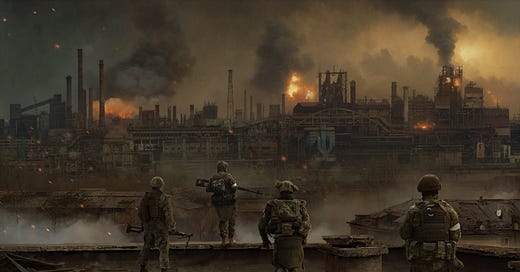










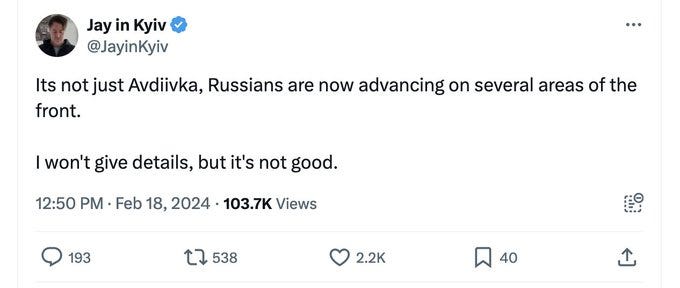
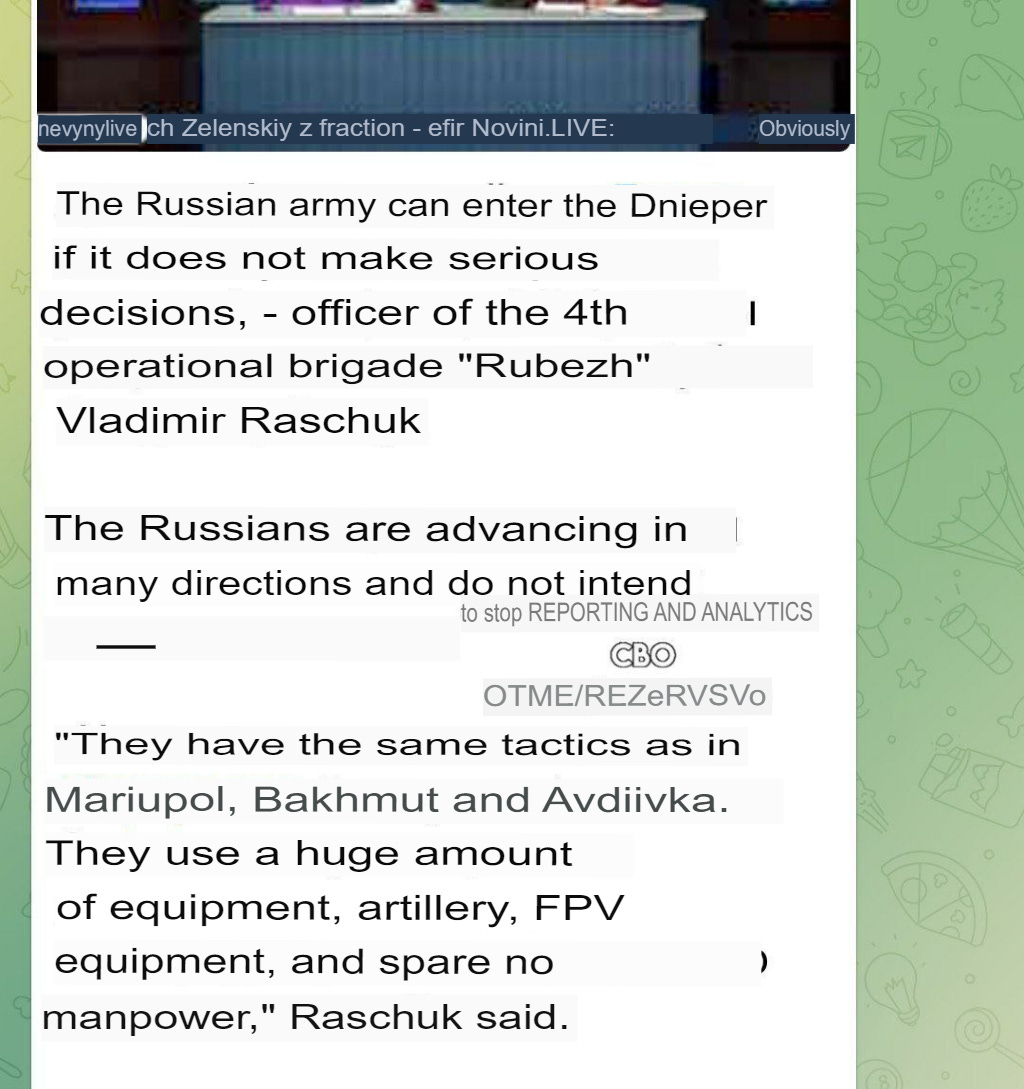
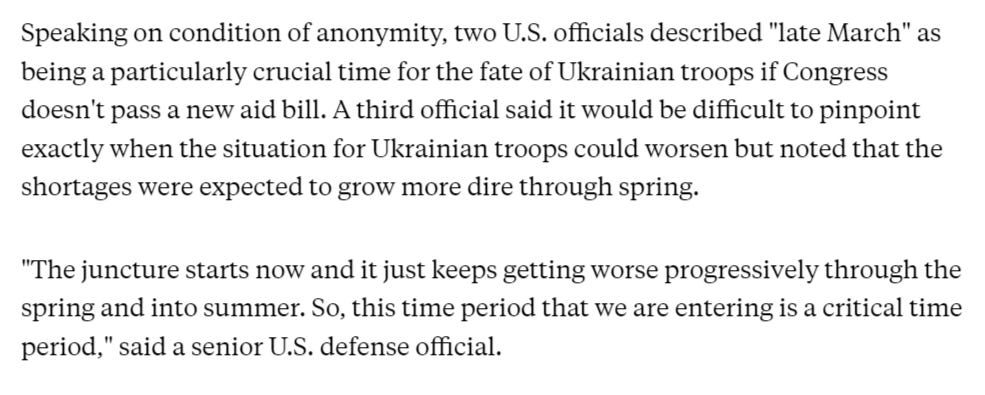



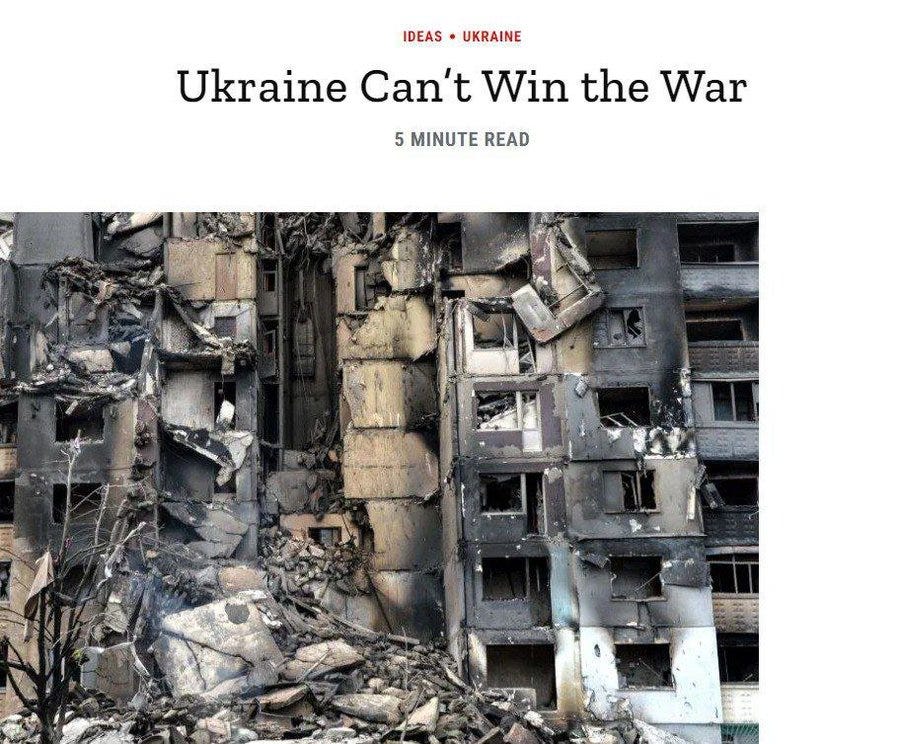


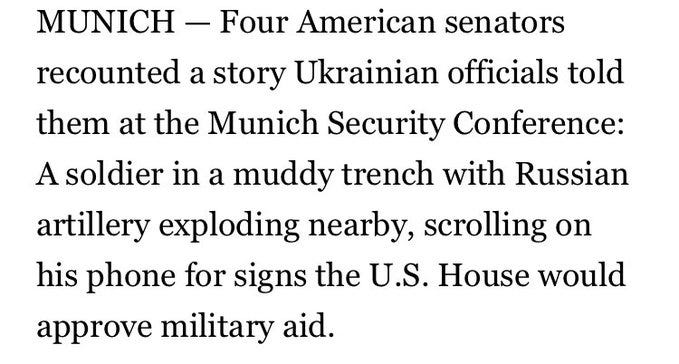

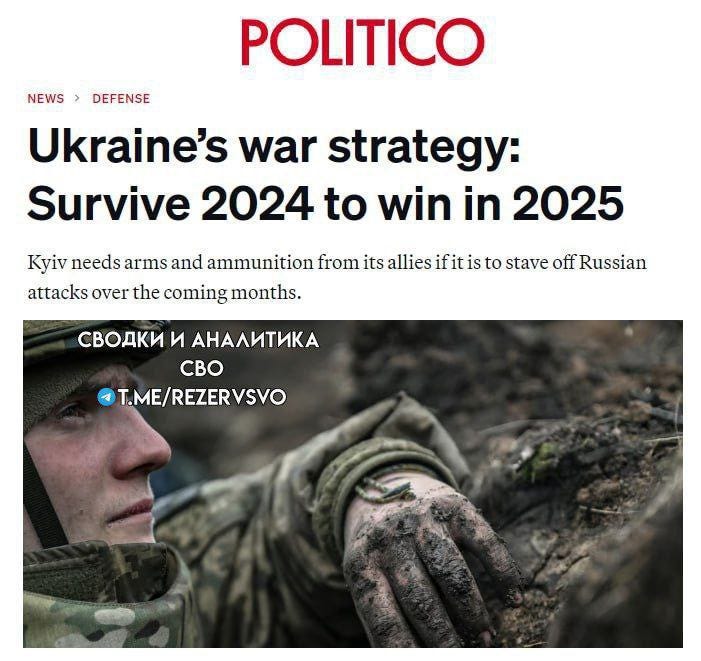


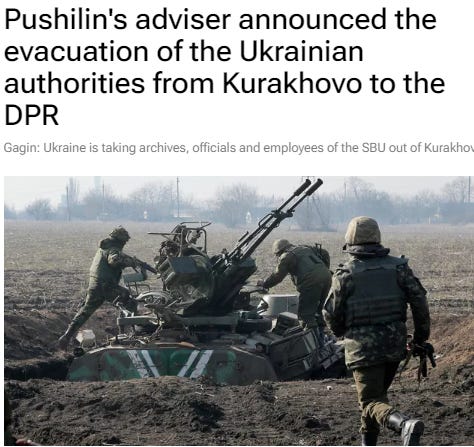

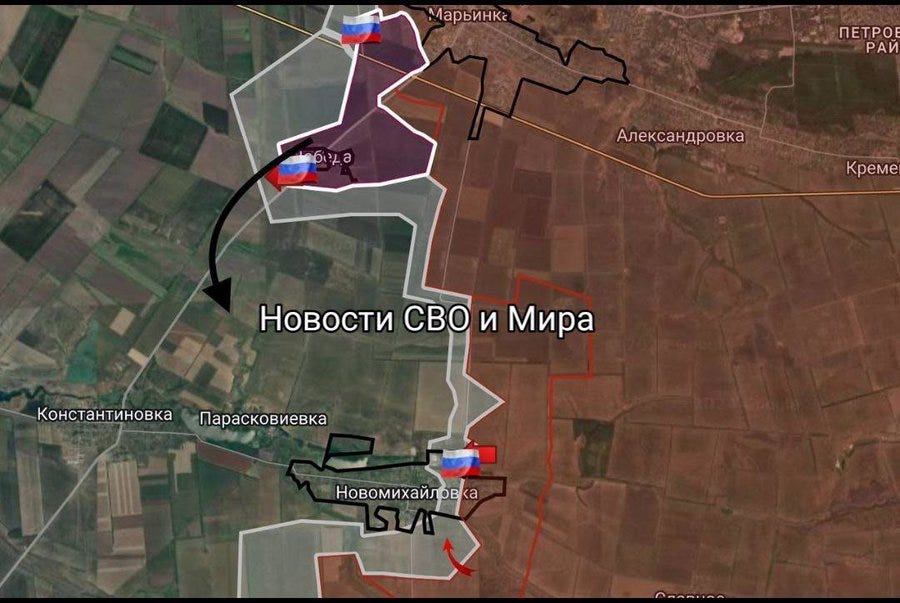
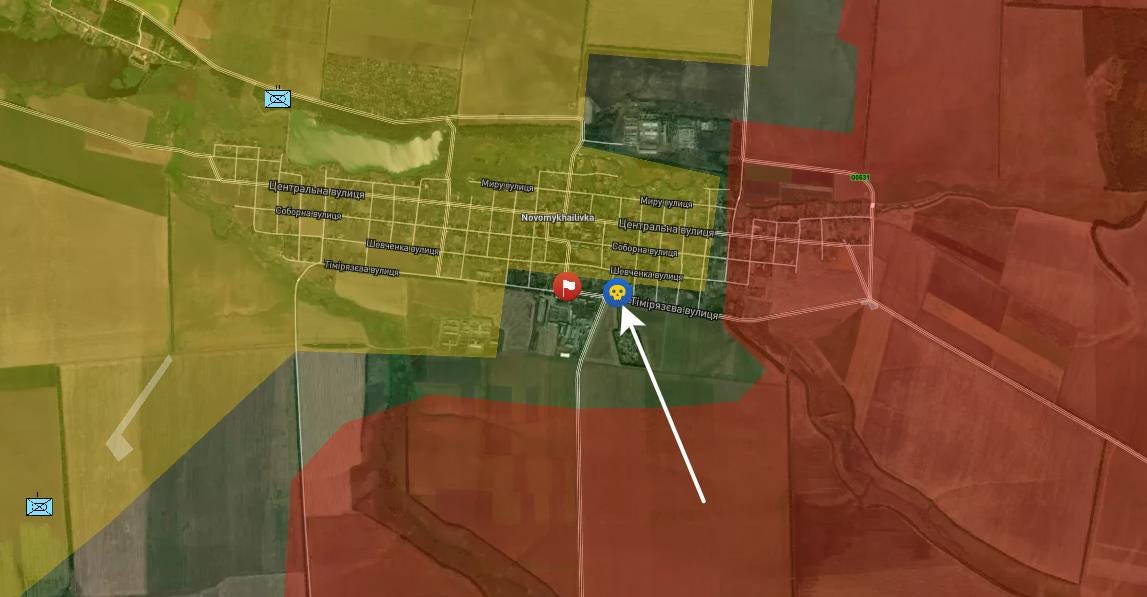


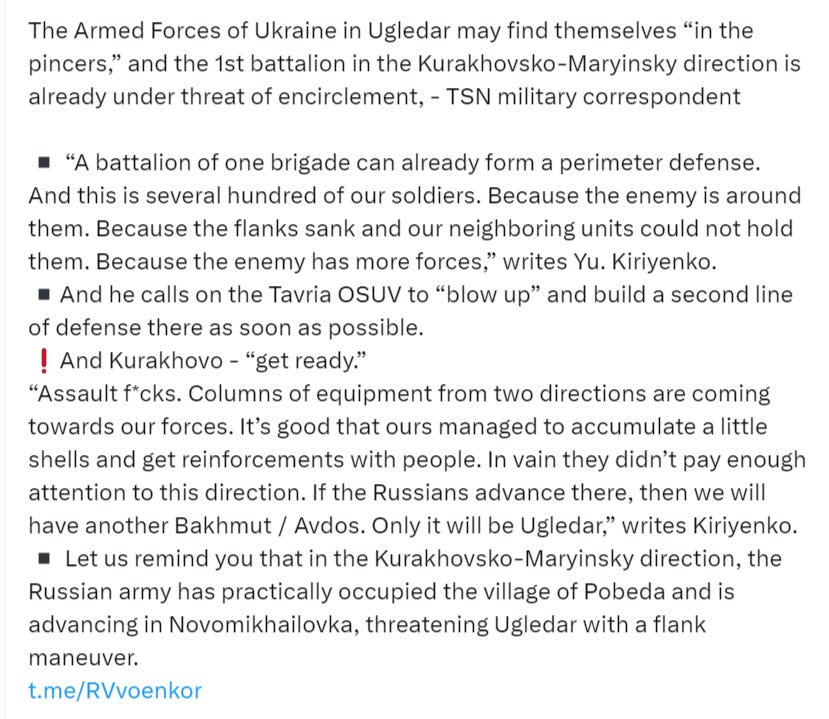
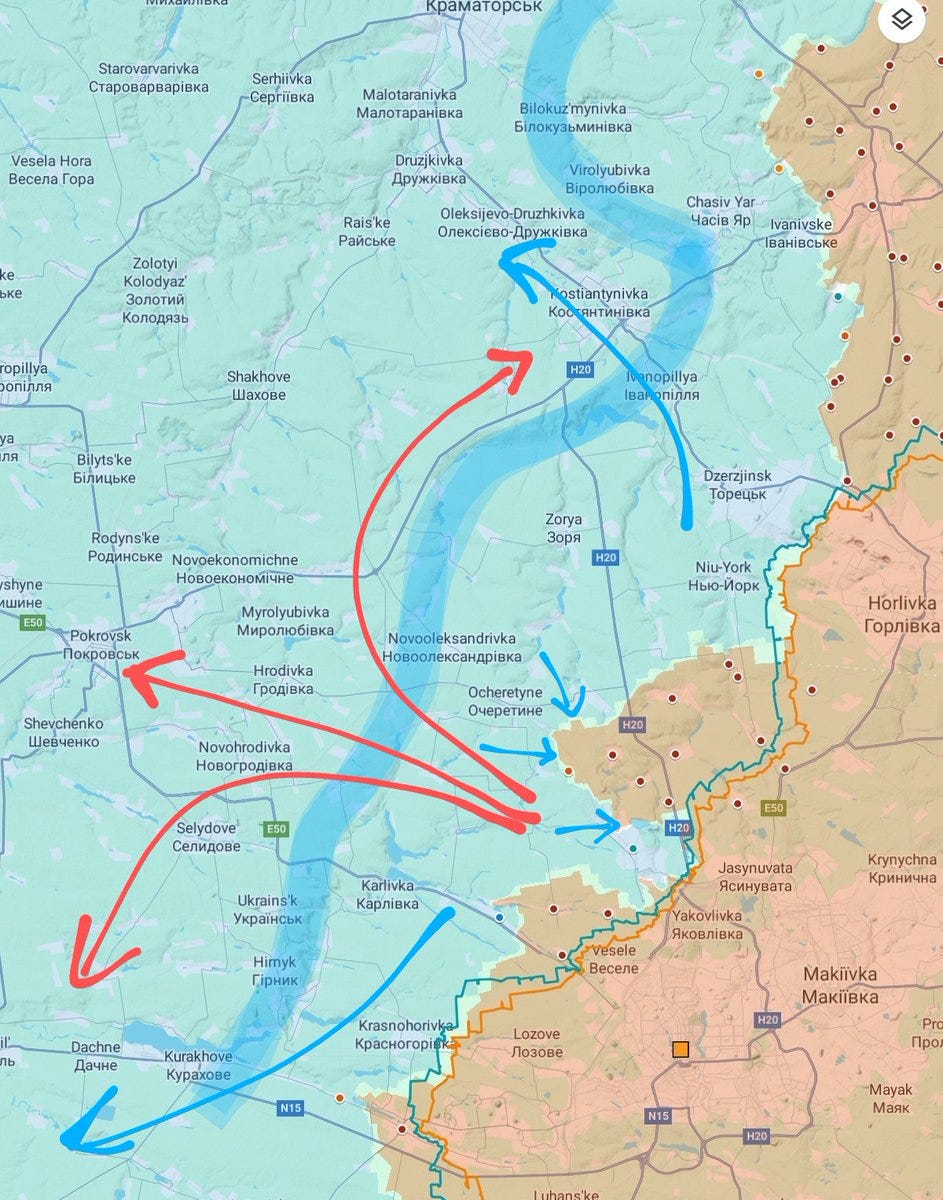


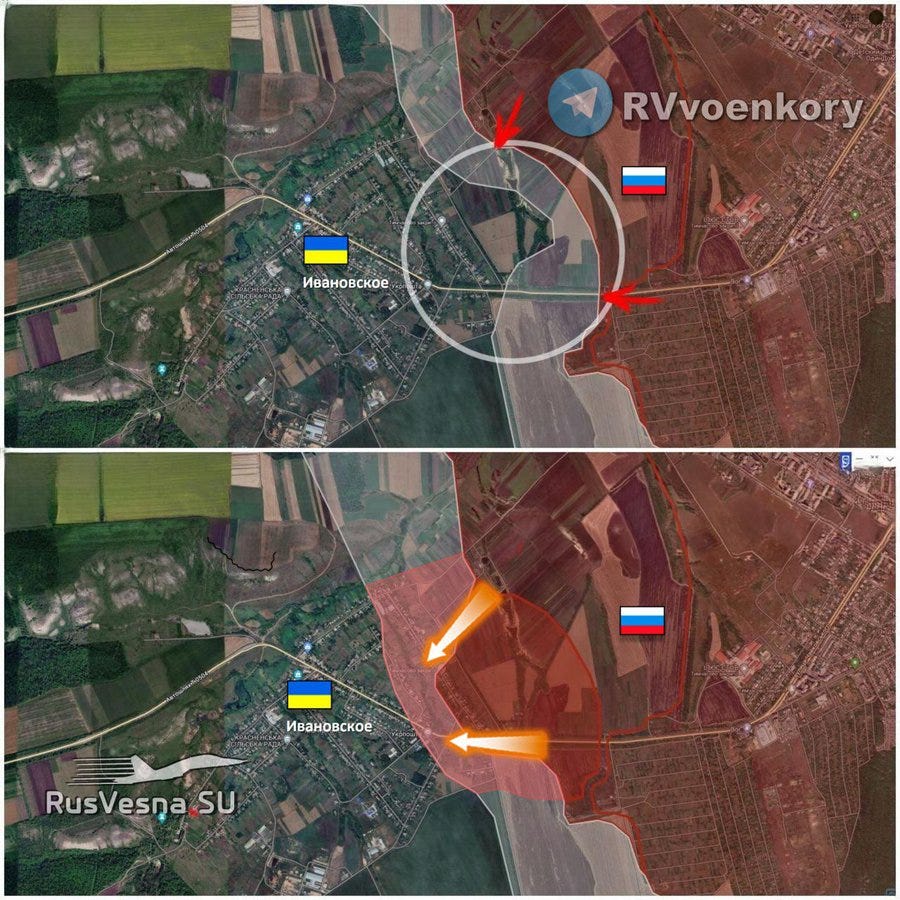
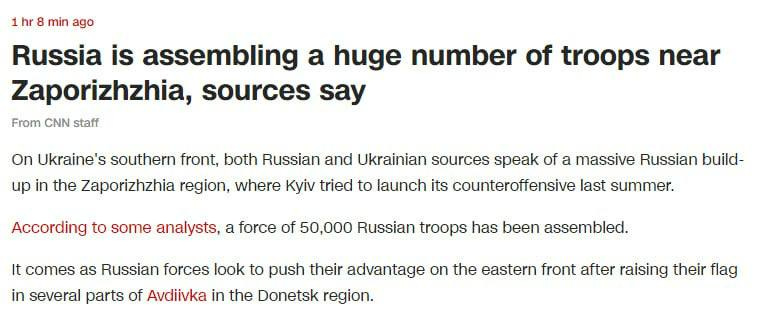


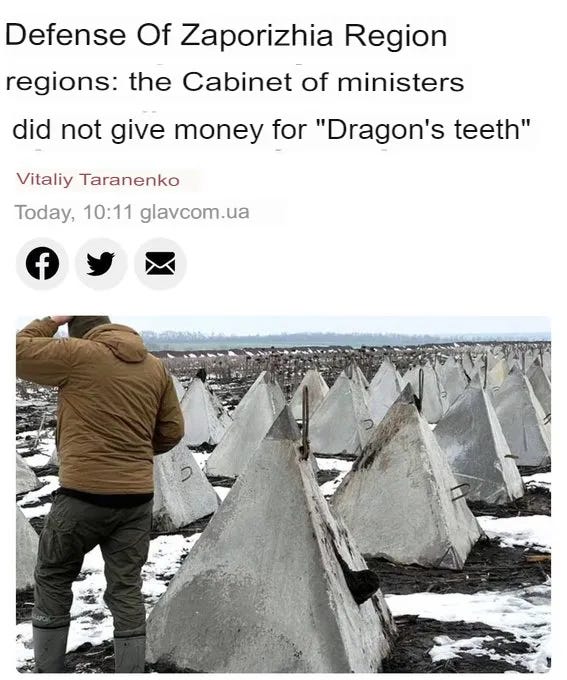


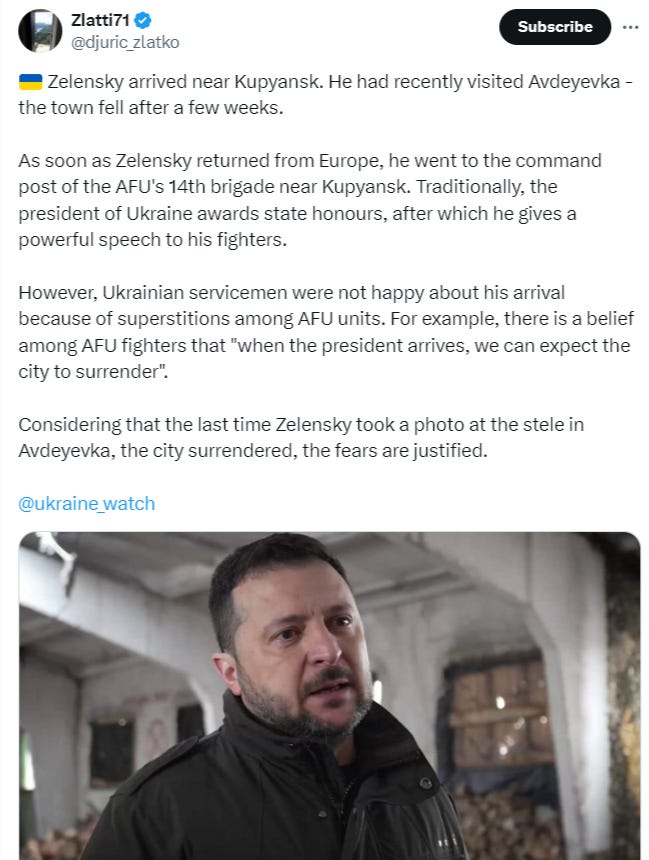
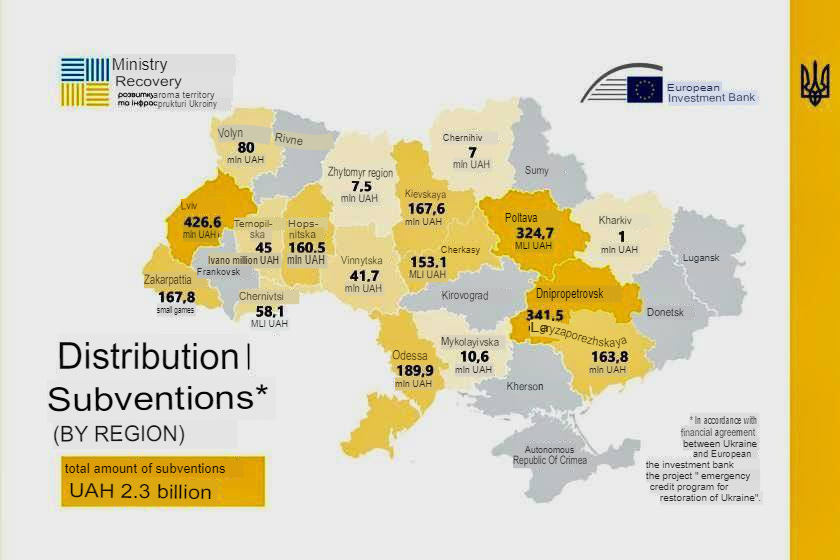




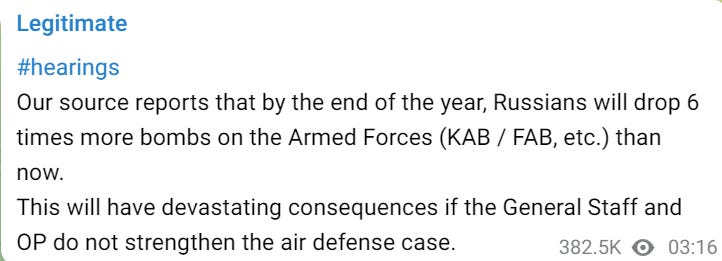
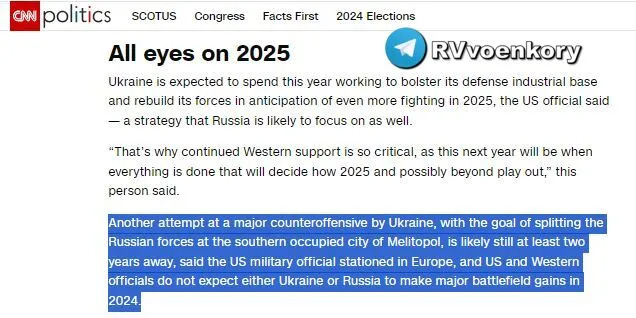



I'm nowhere close to an expert on military affairs, so I'm just going to assume that the summary is accurate and comprehensive even if the non-stop fighting around Sinkovka/Terny is never mentioned, which appears to be a long-running series of clashes without either side making progress.
As for the PMR nonsense, I can speak a little more authoritatively, so let's clear that right up.
First of all, the person who announced that PMR will ask to be annexed by Russia is none other than Gennady Ciorba, usually described as a local "opposition politician" although he doesn't any office. He is, though, a regular shit-stirrer, sometimes for the good (such as during the idiotic lockdowns) but most of the time for the bad. Consider him our "Navalny" in that he's allowed to be a pest to show that things are fair and democratic around here.
This asshat took a real event - the upcoming convocation of deputies in PMR - and just imagined the purpose of it (begging for annexation by Russia). The deeper truth is that Moldova passed a law last year making it a jailable offense to be a PMR government official, so the deputies have not met ever since then. Why not? Because the border with Ukraine is sealed off, so they risk being arrested if they go anywhere (via or inside Moldova). It's a kind of weird technicality that, as long as they don't meet in their official capabilities as deputies, hence the "freeze" on the assembly.
Why might the deputies be meeting now? Well, most likely to protest another new Moldovan law which basically is stealing 40 million dollars/year from the PMR government by forcing all imports to PMR (which come through Moldova, remember, due to Ukraine's sealed border) to pay custom fees to Moldova. Previously, PMR imports were exempt from this. And there are some other issues which are mindboggling stupid such as Moldova refusing to let PMR import medicine from Russia or Belarus and refusing PMR to import an X-ray machine made in Slovakia.
It's picayune and dumb stuff like this which Moldova constantly does as a form of harassment, plus even dumber shit like not letting PMR import blank license plates for cars, etc. But the reimposed custom duties is the big issue since it is costing the PMR government serious money.
That being said, even IF the PMR deputies called on Russia to annex them, this is just a symbolic move that means nothing. PMR did the same thing in 2014, and nothing happened. First of all, PMR would have to hold a referendum on the issue, not just issue a declaration. Secondly, Russian foreign policy has ALWAYS been that PMR is legally Moldovan territory, and that the issue needs to get worked out on that basis. This nearly happened in 2003, btw, with Putin fully on board (the EU tanked the agreement).
PMR has a "pseudo" embassy in Moscow that has never been officially recognized, and there's little appetite anywhere inside Russia to annex PMR. Less than half the residents of PMR are ethnic Russians, it was formerly part of Ukraine during the Soviet Union, and there are zero resources in PMR that Russia needs or wants. Maybe if Russia annexes Odessa oblast in the far-off future, things will change, but not now, no way.
Secondly, the government of Moldova, specifically President Maia Sandu, is dying of a "thousand cuts" from her cronies having abused their offices and stolen everything in sight for the past two plus years. At the end of this year, there is an important election which combines a) the presidential race (she's running for another term) and b) a referendum on joining the EU. She SPECIFICALLY combined these two events on the assumption that pro-EU fervor will help her win re-election since she is (sincerely) rabidly in favor of Moldova joining the EU.
What she does NOT want right now is a major scandal, and involving Moldova in any kind of war or use of force or "police action" or whatever euphemism you want to call it, would be one. There are plenty of pro-Romania and pro-EU folks in Moldova, but the number of folks in favor of starting a war can be counted on two hands. It is literally a non-starter. Moldovans aren't warlike people even on the best of days, and with prices out of control and other major issues to deal with, NOBODY wants to start a war - especially not on PMR, which is chock full of Moldovans in every sense of the word (i.e. ethnically and/or in terms of citizenship), and lots and lots of people west of the Dniester have family east of the Dniester.
In a nutshell, no fucking way could she launch any kind of war. And yah, the Moldovan army has a few shiny new armored vehicles donated by Germany, some training with NATO, etc., but they have virtually no air force and half the soldiers are impoverished villagers who can barely tie their shoes because the pay is super low (even for moldova) and the barracks, etc. are in shit condition. Moldova has a few HUNDRED crack soldiers with foreign experience, etc., but that's it.
Third, nobody, and I mean nobody, in PMR wants to go to war with anybody, Ukraine or Moldova or otherwise. There's also barely any equipment, no drones, no planes, no helicopters, etc. And somewhere around 90% of the Russian (army) soldiers in PMR are PMR citizens, so no, they don't want to start a war either.
Fourth, and perhaps most importantly, a lot of sneaky shit behind the scenes has been going on. For instance, the PMR foreign minister, who is an ethnic Ukrainian and citizen of Ukraine, got a rather bullshit criminal charge put on him by Kiev. No idea what that's about, but it was clearly some kind of move to pressure him/PMR. I think that kiev is angry because PMR has been helping a few folks escape conscription in Ukraine by sneaking them across the border (the official border crossings are all sealed, but the actual border is 200km long and has no natural barriers, so it's quite feasible to find a crack in it to sneak a few individuals across). And it looks like the MGB ("state security ministry") of PMR has been organizing some of these border crossings.
Also, the same guy (PMR Foreign Minister Ignatiev) was spotted coming out of the Romanian embassy this week, in Chisinau (Moldova). Why was he there? No one knows, and no one has said. He sure as hell doesn't speak romanian, so something is up. And I noted that he drove his own car (with PMR license plates) and wasn't arrested or harassed by the Moldovan cops, so clearly something shady is afoot there. Previously, Ignatiev said that the long-running negotiations between PMR and RM (Moldova) couldn't be held in Chisinau anymore because of that new law subjecting PMR gov't officials to arrest. So your guess is as good as mine as to what's up.
Lastly, it's the British embassy in Chisinau which has been pushing for a terrorist strike inside PMR, using ukrainian soldiers/special ops guys, not Moldovan people. They already did this two years ago, but whatever they expected to happen (Moldovans support a war? PMR people turn against Russia? PMR turns against ukraine/its own Ukrainian citizens? Who fucking knows) didn't happen. In 2023, the Brits also sent in a retard who was born in PMR but who lived in Ukraine for 15 years back to Tiraspol with a car bomb, but he never even set it off. So not exactly "top shelf" planning there, but the Brits are evil as fuck, so there's no tellning what crap they're planning to do next, just something to further destabilize the region/situation.
Frankly, there's not a single fucking English-speaking person in the world (even pro-Russian ones) who has even the foggiest idea of what's going in PMR, so everyone's idea of "research" is just collating all the BS folks have been spitting out for years. It's clown world, I'm telling you. And it really sucks to live here and know that these misinformed lunatics think of me and my family and my neighbors as expendable pawns on their genocidal chessboard.
25 Feb 2025 The difference between West and the RF
Re. phone aps for the masses for the sighting of enemy drones
The subject came up during the People’s Front meeting held by President Putin with defence industry workers in Tula
Everything is discussed, from wages, to benefits, to the Family programs, to work, the Crimea, to workers’ ideas – from which it may be see that Putin is interested to learn what he does not know, and remedy the malfunctions or grievances he can
And this from a defence worker – all you need to know about how the East is different
‘Recently, we came across a similar app in Ukraine and found a very interesting feature. Unlike us, they first need to watch three commercials before sending a signal about a drone, and only then will they be able to report it. Yes, there are all sorts of casinos advertising and so on. Nightmare. A very significant difference, of course.”
https://karlof1.substack.com/p/meeting-with-active-participants